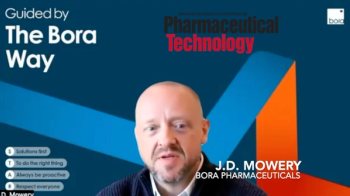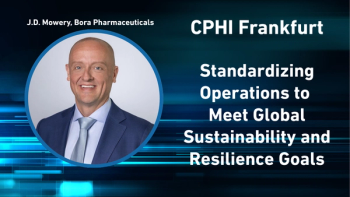
- Pharmaceutical Technology-04-02-2009
- Volume 33
- Issue 4
Ever Vigilant (A Pharmacovigilance Book Review)
In a recent book, UK regulators explain how to establish a pharmacovigilance system.
Pharmacovigilance is monitoring the safety of a drug product through mechanisms such as Adverse Event Reports. Drug manufacturers must collect all reports and provide them to the appropriate regulatory body, which evaluates drugs' risk–benefit ratios and restricts the use of products when necessary.
The United Kingdom's Medicines and Healthcare products Regulatory Agency published the Good Pharmacovigilance Practice Guide to help manufacturers and pharmacovigilance professionals ensure that their safety-monitoring systems are complete and that reports are prepared properly. This authoritative book is surprisingly unintimidating and easy to understand. The authors present information in a logical manner, starting with the responsibilities of a pharmacovigilance professional and moving through the systems and reports designed to guide a company and professional through the creation and control of the pharmacovigilance system.
Good Pharmacovigilance Practice Guide, Medicines and Healthcare products Regulatory Agency, London, 2008, 256 pp., ISBN: 978-0-85369-834-0
Each chapter begins with an editor's note that describes its topic and provides important contextual information. The chapters are sufficiently limited in scope to provide adequate focus and detail without becoming overwhelming. Each chapter is easily digestible and includes terrific examples to illustrate and reinforce the content. For instance, the authors present common inspection findings (i.e., failures) for contracts and quality-management systems and thereby draw attention to areas that are often overlooked.
The chapters cover the expectations of the qualified person responsible for pharmacovigilance in the European economic area, including collecting and managing data; evaluating data; developing risk-management plans, spontaneous, periodic, and required reports; and interactions within companies and with contractors.
The chapters about spontaneous case reporting and interactions within a company hold particularly useful information. The authors explain the likely sources of reports, the appropriate way to record events, and how to respond to the reports. The chapter also focuses on the details of case assessments. By defining the criteria to evaluate the seriousness and cause of a report, the book demystifies a common source of confusion. The authors also provide a decision tree to help define to whom and how a report should be given after the seriousness and cause of the report are evaluated. In addition, the chapter includes information about exceptions, several examples of the use of the decision tree, and the typical failures that have been found in existing systems.
Another important aspect of the pharmacovigilance system is the ability to receive reports from anywhere in the company, and the pharmacovigilance professional needs to maintain connections with the correct levels of an organization. Although every organization is unique, the general information included in the chapter titled "Interactions between Pharmacovigilance and Other Functions" is useful and provides a checklist for new pharmacovigilance professionals. The chapter describes the 10 most important connections and the types of information that should be exchanged, focusing particularly on interations with regulatory affairs departments. This section of the chapter covers the many types of reports and commitments that should be exchanged between functions.
The book's four annexes bring together information from many divergent sources and may well be one of the greatest values of the publication. They include an introduction to pharmacovigilance inspections, an explanation of relevant legislation and guidance, a table of UK Pharmacovigilance offenses and penalties, and safety reporting requirements for clinical studies. These annexes were developed specifically for the publication and are not available in this form from other sources.
Despite being one of the best written guidance documents available, the book has a few problems that detract from its overall quality. The first problem is the overuse of acronyms. Although this is a relatively minor point, the preponderance of acronyms can become extremely distracting. For example, the first chapter states, "Even if a MAH with products authorized in the EU has not submitted a DDPS, the MAH should provide ..." With effort, the reader can decipher this code and understand the meaning.
The second problem, however, seems a bit more daunting. It is the authors' apparent confusion about the book's target audience. Throughout the text, the authors assume that the reader has a great understanding of the purposes, goals, and reporting structures for a pharmacovigilance professional. Yet this background information is included in Annex One, which would strike experienced readers as superfluous. A solution might have been to include the basic principles early in the book to ensure that all of readers are on the same level.
The authors' confusion is also manifest in the relative depth of the book's chapters. The basic chapters occasionally include a wealth of information, but others are somewhat sketchy. For example, the "Reference Safety Information" chapter does not include enough discussion to elucidate this complex concept. Yet the section about data management, which is largely irrelevant to new pharmacovigilance professionals, is complete and extensive. Nevertheless, new professionals would still benefit from the book because even where the information is sketchy, the text indicates areas that require investigation.
This book is highly recommended to new qualified persons for pharmacovigilance and to those who aspire to fill this important role. The value of the core material that simply and completely lays out the responsibilities for the pharmacovigilance system should not be underestimated because it can have a significant effect upon a drug company. The annexes provide information in a concise manner that will make this a valuable reference for both new and experienced pharmacovigilance professionals.
Todd L. Cecil is vice-president for compendial sciences at the US Pharmacopeia, 12601 Twinbrook Pkwy, Rockville, MD 20852-1790, tel. 301.816.8234,
Articles in this issue
over 16 years ago
Report from: Europeover 16 years ago
In the Spotlight April 2009over 16 years ago
Reference-Standard Material Qualificationover 16 years ago
Pharma Capsulesover 16 years ago
Congress and Obama Seek to Bolster Drug Safetyover 16 years ago
Deep Freeze: Innovations in Lyophilizationover 16 years ago
Insider Solutions: Device Database Can Help Pharmaover 16 years ago
Parallel Tracksover 16 years ago
Tracking ExcipientsNewsletter
Get the essential updates shaping the future of pharma manufacturing and compliance—subscribe today to Pharmaceutical Technology and never miss a breakthrough.





